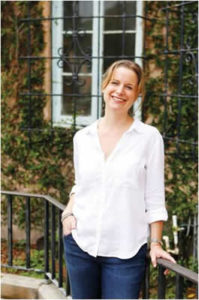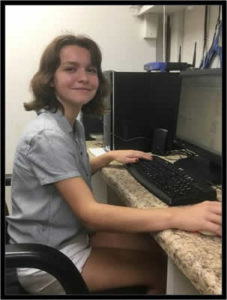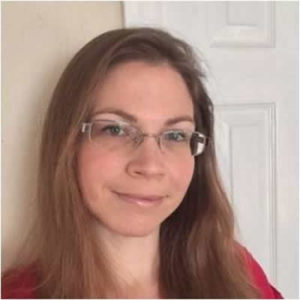Laboratory Overview
Dykstra Laboratories, Inc. is a research and development laboratory formed in 1997 and located in Gainesville, Florida, USA. Generally, our laboratory is interested in the field of bioelectromagnetics. This includes the effects of both exogenous electromagnetic fields (outside the organism) and endogenous electromagnetic (EM) fields (inside the organism). Exogenous fields emanate from the environment and may include natural and man-made EM fields. Endogenous fields are naturally produced by organisms that influence how a given organism detects an exogenous field while simultaneously regulating biological functions.
Although all aspects of bioelectromagnetics are investigated and reviewed, our laboratory’s emphasis is on insects. Our primary test animal is the Indianmeal moth, Plodia interpunctella. We have also worked with the Webbing Clothes Moth, Tineola bisselliellae, the Raisin Moth, Cadra figulilella (formerly Ephestia figulilella), the Mediterranean Flour Moth, Ephestia kuehniella, the almond moth, Cadra cautella, and the Rice Moth, Corcyra cephalonica.
Insect Olfaction
Insect olfaction is the science of how insect’s smell. Although the predominant theory has revolved around a “lock and key” mechanism for multiple decades, direct evidence for it was and is lacking. Due to the lack of a coherent theory that could be supported by physical laws, this theory of olfaction had to be abandoned. Our own research, along with supporting research from many other laboratories, has made it more certain that the insects actually smelled “wavelengths”. Until recently, we did not understand the mechanisms involved.
The ability of animals to smell wavelengths is not a new theory. The first written accounts of this theory come from G.M. Dyson in 1937 and 1938. Robert Wright expanded this theory with his scientific writings and researched both insects and humans. Robert Wright attempted to unify his theory of smell for both insects and humans. Although he was unable to, his ideas of deterrent frequencies and their possible roles in compromising olfaction were definitely ahead of their time. Philip Callahan offered a primary mechanism involving dielectric antenna theory and this was an important starting point. However, it became clear there were secondary mechanisms that needed to be understood. A breakthrough occurred in our laboratory in 2016 which allowed many of the pieces to fall into place. Currently, many of the details have been worked out giving us a firm grasp on not only how insects smell, but how we can prevent them from doing so, and how we can simulate insect olfaction with uncanny precision. In light of temporal dynamics, a secondary mechanism, involving the sensillar lymph was elucidated as well as a tertiary mechanism, involving the membrane receptors.
All three of these physical mechanisms combine to form a new theory of insect olfaction which is loosely associated with the “Vibrational Theory of Odor”. Admittedly, the Vibrational Theory of Odor is largely a vertebrate phenomenon, but in 2011 Maria Isabel Franco and her colleagues attempted to associate it with insects. Although evidence was presented that showed the flies were smelling frequencies, no direct evidence was offered in support of a mechanism.
An important distinction to be made between vibrational theories is that ours requires no physical contact between the odorant and the membrane receptor. For this reason, we have reached the conclusion that insects are not detecting odors via Luca Turin’s “electron tunneling” mechanism nor the “swipe card” model put forward by Jennifer Brookes (both vertebrate based theories), but that they are detecting odors in a biophysical manner not previously known in entomology.
Carbon Dioxide Detection in Insects
A comprehensive review of carbon dioxide detection was initiated in our laboratory. We analyzed arthropods with established carbon dioxide receptors such as mosquitoes, bugs, and butterflies and were able to decipher the CO2 olfactory code for each. In addition, we were able to differentiate and quantify the roles of Gustatory Receptors 1, 2, 3, 21a, and 63a in carbon dioxide detection. Furthermore, we were able to decipher how various molecules structurally unrelated to carbon dioxide, are nevertheless able to excite the insect’s carbon dioxide receptors. Finally, we tentatively understand how the moth, Helicoverpa armigera, may be the most sensitive insect when it comes to detecting carbon dioxide.
Chemoreceptive Proteins
There are a host of chemoreceptive proteins in insects, both membrane bound and free-floating. In addition to the Gustatory Receptors mentioned above, those that are membrane-bound include Odorant Receptors (ORs), Ionotropic Receptors (IRs), and Sensory Neuron Membrane Proteins (SNMPs). In the sensillar lymph there are free-floating Odorant Binding Proteins (OBPs) and the more specific Pheromone Binding Proteins (PBPs). Each of these proteins contributes individually and in concert with related proteins in order to provide insects the ability to smell with uncompromising precision.
A knowledge of how these proteins assist in olfaction is a major focus of this laboratory. We are interested in how these proteins function within a given species and across the systematic boundaries between Orders and Families. A result of this research will be the ability to control and manage insect populations via their sense of smell. It all begins with basic insect behavior but the natural repercussions will clearly allow us to practice state-of-the-art insect pest management in a way that we could have only imagined one or two decades ago.
Who We Are
Thomas M. Dykstra, Ph.D.
Our laboratory director, Thomas M. Dykstra (click for C.V.) received his B.S. in entomology from Cornell University in 1990. He traveled down to the University of Florida and received his M.S. in entomology (1994) and investigated the neurophysiology of pheromone production in moths. Continuing at the University of Florida, he received a Ph.D. in insect bioelectromagnetics under Dr. Philip S. Callahan in 1997
Immediately following his degree, Dr. Dykstra started his own laboratory (Dykstra Laboratories, Inc.) in 1997 which more broadly investigates bioelectromagnetics ranging from bacteria to humans. Predominantly, he studies insect olfaction (how insects smell) from the standpoint of bioelectromagnetics and has developed a new theory based on the fusion of biophysics and neurophysiology.

Thomas M Dykstra, Ph.D.
Past Employees
Drew Swaggerty
Drew Swaggerty graduated from the University of Central Florida and came to us with a strong background in laboratory protocol having worked at an entomology laboratory in southern Florida. He is one of the world’s experts on insect chemoreceptors, is detail oriented, extremely business savvy, sets up daily experiments for us, and challenges us to think outside of the box. He is very good to bounce ideas off of. Drew’s organizational skills allow him to keep track of over 30 concurrent experiments, perform microscopic duties, and maintain multiple spreadsheets. He does so armed only with his intellect and some coffee. Drew is a premier colony manager and rears the healthiest Indianmeal moths in the world (646 progeny from a single pair of Indianmeal moths-current world record) while also having reared the Raisin Moth, the Rice Moth, the Webbing Clothes Moth, and the Mediterranean Flour Moth.
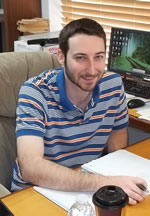
Drew Swaggerty
Emily Saarinen, Ph.D.
Emily worked as a Senior Laboratory Technician from 2000-2001. She is currently an Associate Professor of Biology and Environmental Studies at New College of Florida in Sarasota, FL. Her research investigates the genetics of Florida butterflies and she teaches courses in biology, environmental studies and, of course, entomology.
Bryon Gyllstrom, J.D.
Bryon worked for us as a student laboratory technician from 2002 through 2005 while working on his B.S. in physics at the University of Florida. He went on to receive his J.D. from the Franklin Pierce Law Center in New Hampshire. He was selected to participate in an international intellectual property law program at Tshingua University in Beijing, China. Bryon was previously employed at Chandler, Lang, Haswell & Cole, P.A. as well as Holland and Knight LLP, but he has now settled in as a patent examiner at the U.S. Patent and Trademark Office (USPTO) where he examines “patents directed to illumination.”
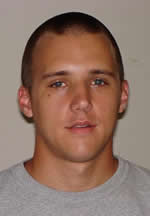
Bryon Gyllstrom, J.D.
Roger A. Haring
Roger was a student worker for us in 2000 and has received in M.S. degree in Agronomy from the University of Florida. He currently works as an agricultural consultant in California for Agriculture Access.
James Van Scotter, Ph.D.
After coming to us with a military background in calibrating heat-seeking missiles (we allowed him to do “whatever” he wanted to do in our laboratory), James worked for us as a student laboratory technician from 2002 through 2006. He is currently an Assistant Professor of Strategic Management in the Department of Marketing and International Business, College of Business, at the University of Colorado at Colorado Springs, CO.

James Van Scotter
Monica MacKenzie
Monica began working for us in 2016 as a student worker while attending nearby Santa Fe College. When not removing moth pupae in order to prepare for our laboratory experiments, Monica may be found working at the microscope or engaged in spreadsheet data entry, as she is shown here. Although she works closely with insects, she has decided not to major in entomology which will probably work better for her in the long run.
Lyndall Brezina
Lyndall worked for us a senior laboratory technician from 2008-2009. She was previously an entomologist at the University of Florida serving as an extension specialist but now is a Production Associate with Conceptual Arts, Inc. in Gainesville, FL where she maintains the National Agriculture Safety Database (NASD) and produces HTML code for web pages and documents.
Casey Parker
Casey worked for us as a student laboratory technician during 2012. She is currently a Ph.D. graduate student in the Department of Entomology at the University of Florida in the area of Medical and Veterinary Entomology. Casey conducts research on mosquitoes, insecticide resistance, vector competency, and the efficacy of various communication strategies. Her dissertation research is supervised down at the Florida Medical Entomology Lab in Vero Beach, FL.
Christina Brady
Christina worked for us as a student laboratory technician from 2011-2013. She is currently the Patient Appointment Coordinator at the Mayo Clinic in Jacksonville, FL.
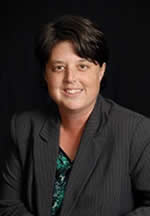
Christina Brady
